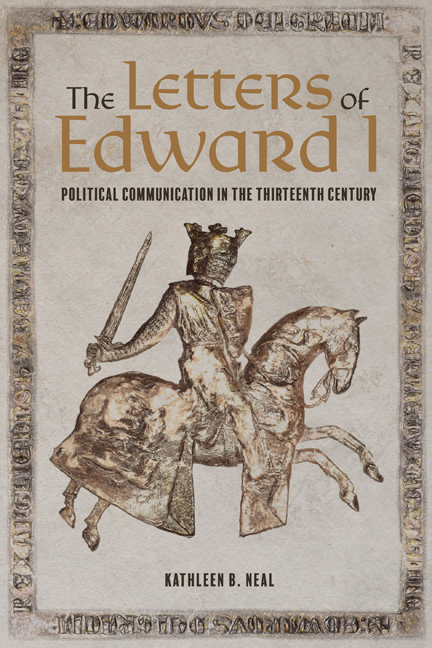Book contents
- Frontmatter
- Dedication
- Contents
- List of Illustrations
- Preface
- Abbreviations
- Introduction: Letters and the Language of Power
- 1 Royal Letters: The Authority of a Form
- 2 Rhetorical Refinement: Epistolary Editing and its Implications
- 3 Announcing the Message: Communities of Reception and Royal Ideology
- 4 ‘Dear Cousin’: Affect and Epistolarity beyond Borders
- 5 Keeping Friends Close: Strategies of Epistolary Alignment
- 6 Rhetoric Under Strain: Re-writing Royal Epistolarity
- Conclusion. Royal Epistolarity: The Voice of the King
- Appendix
- Bibliography
- Acknowledgements
- Index
1 - Royal Letters: The Authority of a Form
Published online by Cambridge University Press: 09 February 2021
- Frontmatter
- Dedication
- Contents
- List of Illustrations
- Preface
- Abbreviations
- Introduction: Letters and the Language of Power
- 1 Royal Letters: The Authority of a Form
- 2 Rhetorical Refinement: Epistolary Editing and its Implications
- 3 Announcing the Message: Communities of Reception and Royal Ideology
- 4 ‘Dear Cousin’: Affect and Epistolarity beyond Borders
- 5 Keeping Friends Close: Strategies of Epistolary Alignment
- 6 Rhetoric Under Strain: Re-writing Royal Epistolarity
- Conclusion. Royal Epistolarity: The Voice of the King
- Appendix
- Bibliography
- Acknowledgements
- Index
Summary
The epistolary form offered rulers and their governments a medium of unique reach and flexibility for developing a language of authority, separately from the question of content. For English kings, authority appropriate to a range of communicative situations could be crafted from the admixture of various epistolary models. The king himself was a potent source of his epistolary authority, since letters ‘spoke’ in his voice, and stood for his presence. The immediate, English context also provided the model of the writ; an epistolary form developed in the context of kings as givers of law and mediators of legal process. From the continent came theories of letter-writing that offered models of other kinds of political and jurisdictional authority. From the papal curia came the system of rhythmic Latin prose known as the cursus curiae Romanae, or simply as the cursus, that had come to be associated with the highest registers of power.
The uptake of continental influences in English royal letters was coincident with the effort to expand and reinforce royal authority, and accelerated during Edward's reign. While there is no direct evidence of Edward's personal direction of these changes, it is unlikely that they took place without his imprimatur. He certainly interested himself directly in the oversight, and even occasionally the dictation of his letters. The clerks of his administration were carefully selected and trained so that they became expert in blending and balancing available models to create both individual letters and a collective communicative discourse that broadcast maximal royal authority in each situation. Variations of structure, vocabulary, and even language selection allowed a range of registers to emerge in royal letters, each of which was tailored to its circumstances. Thus, while English royal letter-writing has sometimes been dismissed as insufficiently dictaminal and even crude according to the standards of continental dictatores, in this chapter I argue that the form of royal letters was well suited to its ultimate purpose – namely, that of crafting a discourse of prestige through inscribing royal authority and voicing royal commands – and that both king and clerk were actively engaged in this enterprise.
The communicative function of letters, however, depended on securing the recipient's goodwill.
- Type
- Chapter
- Information
- The Letters of Edward IPolitical Communication in the Thirteenth Century, pp. 24 - 49Publisher: Boydell & BrewerPrint publication year: 2021



